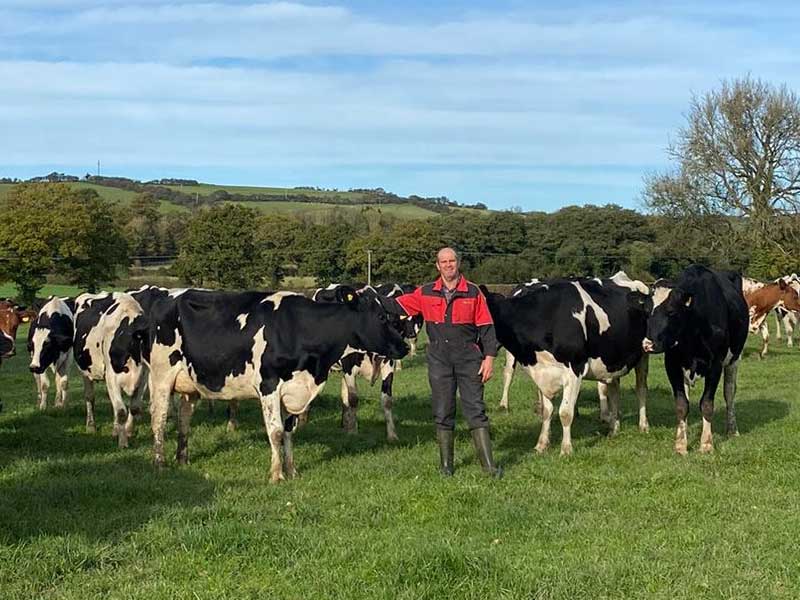Science Behind SlurryForSoil™
Behind SlurryForSoil™ there’s a wealth of science and data.
The plant growth promoting rhizobacteria and fungi have been extensively studied and shown to have wide-reaching benefits to soil and plant health.
In recent years, SlurryForSoil™ has also been subject to independent trials by the experts at Duchy College, as well as being put through its paces on 15 commercial dairy farms across the UK.
Combined, these trials showed:
ROIs ranged from £4.99 to £16.81 per £1 invested
Carbon footprint per unit of forage reductions ranged from 16.6% to 51.9%
Get in touch & order SlurryForSoil™ now
From independent scientific research to on-farm trials
In 2022, Duchy College tested SlurryForSoil™. With separate dairy herds and dedicated slurry lagoons, researchers isolated and assessed its impact. Samples of the treated and untreated slurry were analysed by NRM labs, as were forage samples taken from the temporary grass ley which had received applications of the two slurries.
Results showed an increase in the retention of key nutrients in the treated slurry, such as ammonium, phosphorus, potassium and sulphur as well as magnesium, copper, zinc and calcium. Across the four cuts, forage increased by an average of 24.3%, with some having more than a 30% increase in yield.
Nutritional analysis of the silage showed SlurryForSoil™ also helped improve forage quality with an average decrease in NDF of 10.7% and increase in plant sugars of 27.7% with corresponding increases in D value and ME.
According to researchers these increases far outweigh the potential benefits of the nitrogen retained in the slurry and potentially shows the microbes are playing a broader role both within the soil and the plants.
Farmer case studies

Anthony Gibby
Based near Carmarthen, Anthony’s herd of 70 Holstein Friesian dairy cows produce around 8,200l/cow with an average butterfat of 4.4% and protein 3.33%.
Anthony applied 38kg of the slurry inoculant in late January 2022 and despite a significant proportion of slurry in the system, analysis showed notable retention of nitrogen.
“While there’s lots of data and stats behind the product, there’s one that matters to me – I needed 14% less nitrogen this year,” said Anthony.
“It took less than half the time to stir the slurry before spreading and was a nice creamy consistency. We had negligible blockages with both the trailing shoe and spreader bar, and the slurry was incorporated into the soil faster.”
“The resulting swaths were noticeably bigger too. We made first cut silage from 119 acres this year and the clamp was fuller than when we did the same with 145 acres last year,” he said.
With a 21.8% increase in forage produced and a significant reduction in fertiliser costs – Anthony also reduced potassium by 84.2% and did not apply any sulphur – analysis showed he reduced his cost of forage by 47.3%.

Phil Williams
Phil farms 265 acres in partnership with his wife, Sian, and her parents in Pembrokeshire in Wales. The farm comprises two units. At Fagwrgoch, there’s 135 acres of hill pasture dedicated to the dairy and sheep enterprises, while the lowland farm in Scleddau focuses on beef and arable production. Currently Phil’s milking 80 cows, a mixture of Holsteins and Fresians.
Mid-January 2022, Phil added 6kg of SlurryForSoil™ to his 20,000 gal slurry tank which receives a mixture of parlour washings and slurry. The treated slurry was applied to 120 acres. 90 ac received 1,800gal/ac (20.2T/ha) and the remaining 30 ac received slightly less. 50 ac were cut for silage, 70 ac were grazed.
Phil was able to reduce fertiliser applications from N:69 – P:0 – K:33/ac in 2021 to N:56 – P:0 – K:28 in 2022, and despite the extremely dry summer forage and grazing levels were maintained.
“I think it’s excellent. It stops the slurry from separating as quickly,” he said. “At application, we usually have to hop off the tractor to remix the slurry every 5 or 6 loads, with SlurryForSoil™, it stayed mixed for at least 2 days.”
